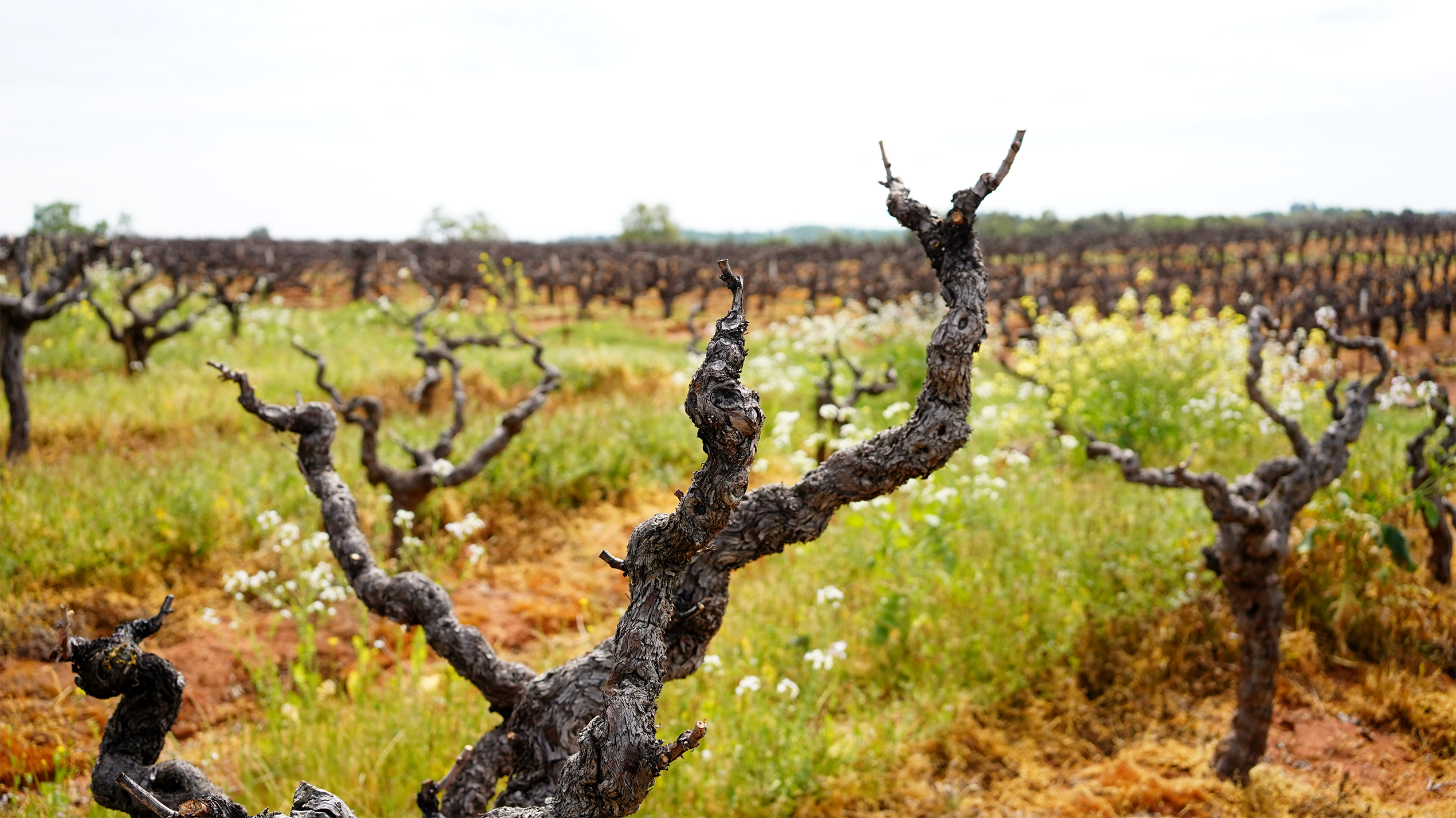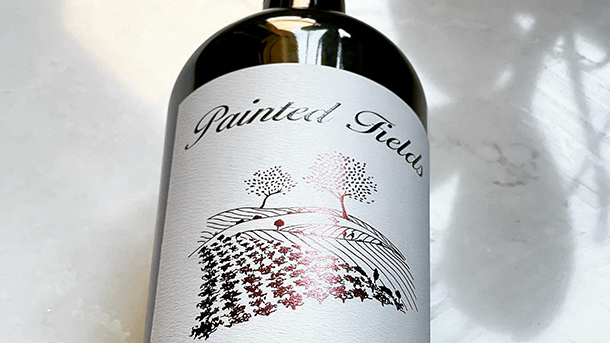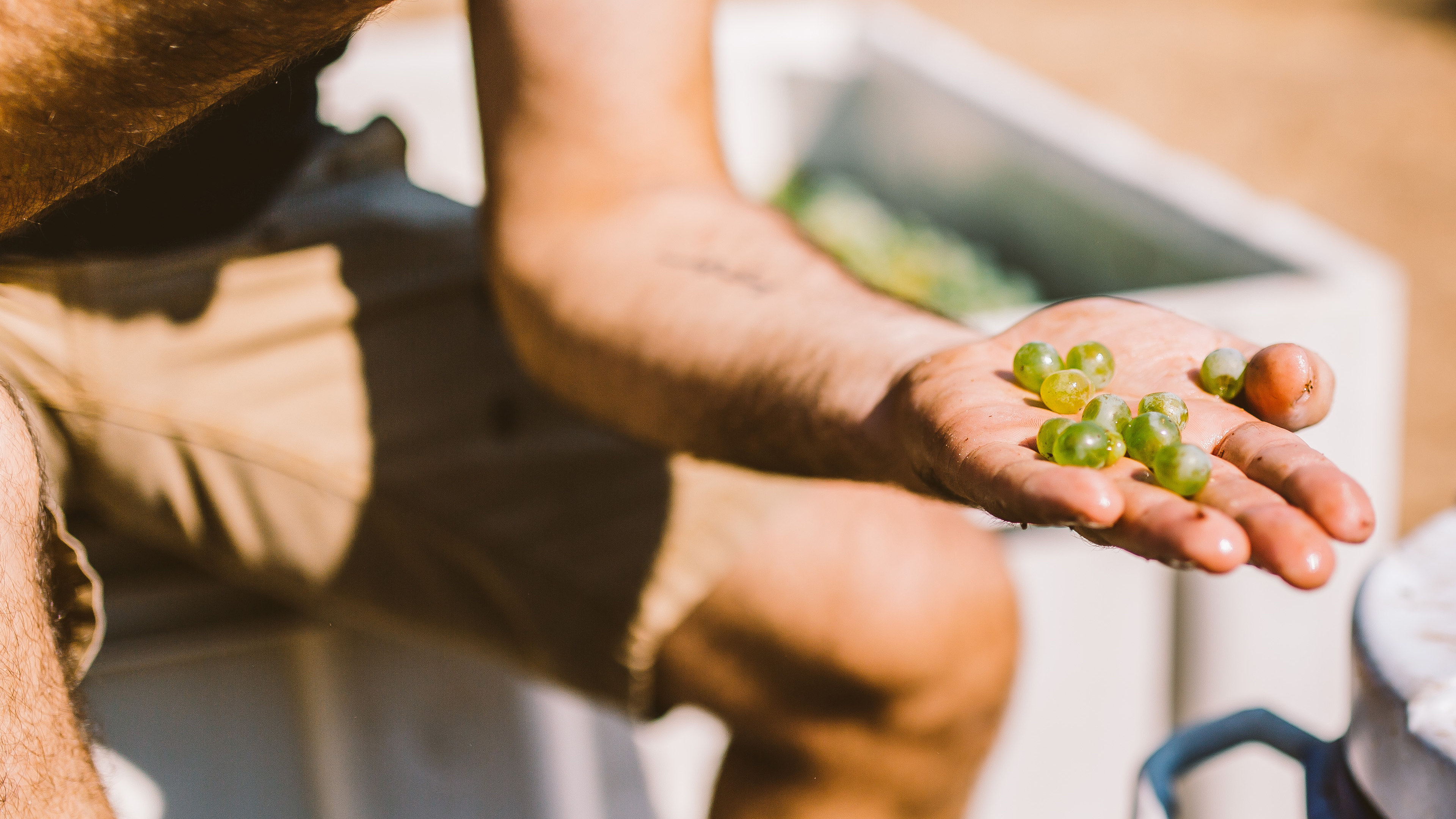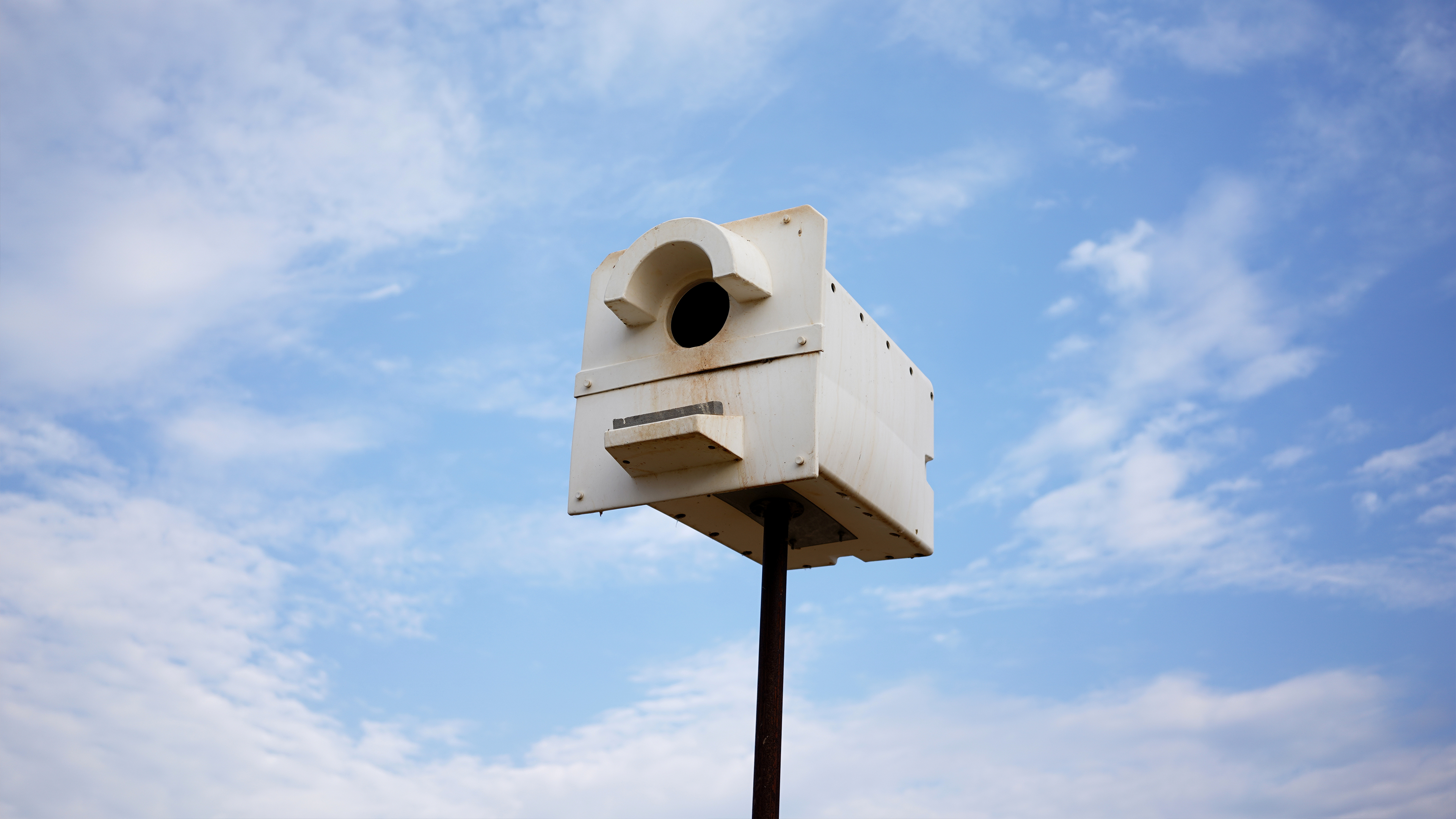Recent news, stories from the winemaker, happenings around the winery, recipes and more!
Mustard Plants Blooming

It must be Spring! Just look at the bright yellow fields full of mustard blooms in the vineyard.
The Andis vineyards have never looked so beautiful with the ground cover throughout. As mentioned in my previous blog, ground cover or cover crops can be beneficial in replacing nutrients. But what about mustard plants? While mustard plants do not return vine nutrients back to the soil, they do provide biofumigation, which suppresses various soil pathogens.
Typically mustard plants are used in vineyards to suppress nematodes, a microscopic worm that infect vine roots. Nematode infection will ultimately lead to low grape production and severe vine damage. Mustard plants produce a biofumigate called glucosinolate that deter damaging nematodes.
Later in Spring, the cover crops are turned, giving beneficial mulch to the soils.
So come visit us at Andis Wines and enjoy the beautiful view of our yellow vineyards while you can!
The Story Behind Painted Fields

When trying to find a name for the winery, our family, friends, contractors, advertising agency, and almost everyone we knew had suggestions. From over 75 potential names, including Painted Fields, we narrowed it down to a dozen appropriate names based on our ideas of wanting a wine that was elegant, timeless, and delicious.
I felt strongly we find a name that started with an “A”, as the name would show up alphabetically at the head of the list and would be easy to find in a long list of wineries. Ultimately, Andy and I decided on Andis Wines, a combination of both our names, as well as one that starts with an “A”.
But with such idyllic scenery and beautiful rolling hills, everyone involved still loved the name Painted Fields, which was the name submitted by Paul Almond and Pam Whitehead of Sage Architects, who designed the Andis Wines building and tasting room. Painted Fields is a beautiful name and was one of the remaining narrowed down names. The name even inspired renowned Hawaiian artist Kelly Sueda to come up with the Painted Fields label design.
Today, Painted Fields has become a known wine brand, producing wines that are popular and delicious. The Painted Fields brand includes wines named “Painted Fields Curse of Knowledge”, a rich Bordeaux style blend, “Painted Fields Cuvee Blanc”, a delicious light, white blend, and “Painted Fields Old Vine Zinfandel”, a blend of Zinfandel grapes taken from some of the oldest vines in the Foothills. We are pleased that Painted Fields has become so popular.
What is Smoke Taint?
What is smoke taint? And why are winemakers concerned?All of us in California are aware of major fires that typically occur in the Fall when conditions are the driest and winds prevail. We all wish fires would not occur but lately, every Fall, the sky appears hazy and the air smells like smoke. We heard someone just off the plane smelling the smoky air say, “ Wow, it smells like California!”.
The concern for vineyards and wineries is the damage smoke can cause to grapes. When vineyards and grapes are exposed to smoke, the results in wines can be undesirable sensory characters. These undesirable sensory characteristics are known as smoke taint with descriptive flavors of “ashtray”, “medicinal”, “campfire”, “smoky”, or “bacon”.
The cause of and impact of smoke taint isn’t always cut and dry. The freshness of the smoke and proximity to the fires are factors. Even certain grape varieties can be more prone to smoke damage. To further complicate matters, similar vineyard sites that have similar smoke exposures may not equally be affected.
Smoke taint is caused by a wide range of compounds found in wildfire smoke, which once absorbed by vines and accumulated in berries, will remain there through processing. One can’t predict which grapes may have suffered damage based on anything intuitive, such as sight, smell or even the flavor of fresh grapes.
There are several options for wineries that fear smoke-damaged fruit. The first is to sample grape berries and have them tested. Since this process is not very accurate, the second option is for wineries to carry out small scale fermentations. Once fermentation is finished a chemical analysis can help predict the likelihood of smoke taint in the wine. However, tasting and sensory evaluations on the wine are even more important.
If a wine has been fermented and it has been determined through lab analysis and sensory evaluation to have smoke damage, there are a couple of options to treat the wine. The first is to pass the wine across a membrane that releases the smoke bound molecules from the wine. The second is to treat the wine with enzymes then use reverse osmosis to remove the smoke molecule. Both of these processes have been shown to help and in some cases make a positive difference. However, whether one is successful depends on the wine.
On August 14, 2021, in the Sierra Foothills, the Caldor Fires started and expanded quickly burning thousands of acres, destroying a community and causing evacuations in many others. Andis Wines and others in the Shenandoah Valley got lucky as we experienced no smoke damage and harvested grapes that showed no smoke taint. Our wines for the 2021 vintage were unscathed and we expect another excellent vintage.
Cheers!
Mark Fowler, Estate Winemaker, Andis Wines
Janis Akuna, Executive Winemaker, Andis Wines
Was Harvest 2021 A Good One?

Let’s talk bad news first. Given was the pandemic with new variants and greater contagion. Moving on to Andis Wines, let’s focus on grape farming and wine making. While 2021 started with normal rainfall, it soon became apparent very early in the growing season that we would see drought conditions, which adversely affected the grapes. First, flowering and fruit set was drawn out over several weeks compared to the normal time frame of about a week. Later in July and early August during the time we would see veraison occurring over a week or so, it too was drawn out to several weeks. Grapes and clusters that are normally somewhat uniform were not. Ripe berries were next to unripe berries, mature clusters were next to clusters that barely went through veraison. As a result, maturity monitoring and sampling was difficult, and a lot of extra time was spent in the vineyards. Moreover, there were a couple of significant heat waves. With the heat and lack of water, crop load was reduced with many vineyards showing a 50% reduction.
The heat and dry conditions had us starting harvest about a week to 10 days earlier than normal, with our first pick of our estate Sauvignon blanc on August 9th. Other varieties started to show early elevated sugar levels giving us major concern. Then there was more bad news. On August 14th, the Caldor fires started and within two days had exploded to over 60,000 acres in the Sierras and Foothills. While we were put on evacuation notice, our vineyards were fortunate to not be affected – no evacuation, and thankfully, no smoke taint. Unfortunately, many of our friends and growers were affected with fire and/or smoke damage to their grapes, and we were unable to harvest several vineyards. To help our 2021 harvest, we ended up buying fruit from several other regions including Clarksburg in the delta, Linden Hills east of Lodi, and the Murphy area. Once we were through the worst of the fire and the heat of late August and early September, temperatures cooled, and our harvest pace, thankfully, slowed down to normal.
So, with drought, fires, heat waves, and a smaller crop load, you are probably wondering where the good news is! Through all of that, we were rewarded with some very beautiful wines. The white wines are bright with great structure and depth. The reds are deep in color and aromatic, rich in character, have complexity and are well structured. Yes, despite the struggles of 2021, the results turned out with an abundance of good news! Cheers!
Janis Akuna - Founder
Mark Fowler - Winemaker
Owl Boxes

When visiting Andis Wines, do you notice the white boxes sitting on poles positioned throughout the vineyards? Part of our sustainability program involves using birds of prey to control the rodent population.
As you walk through the vineyards, you will notice small holes in the ground, typically caused by gophers and voles. Voles will eat roots and bark and can be harmful to grape vines, and controlling their populating is critical as a pair can produce 100 baby voles in a year.
As you view the Andis Estate Vineyard, you will see owl boxes, those white boxes perched on tall poles. Owls will find these boxes, create a nest, usually in winter and early spring, and have their young. All four boxes on the property have been used. A family of owls can hunt as much as 3,000 moles a year. By May, the baby owls are gone, and the boxes remain empty until the following year. Eating so many voles, gophers, and even rabbits create quite a mess with bones stacking up, so we must clean the boxes out after harvest in preparation for the next season.
Janis Akuna, Vintner